maga + nature is healing: April 2025 braindump
Start with Mucha, end with Sainthood or something else.
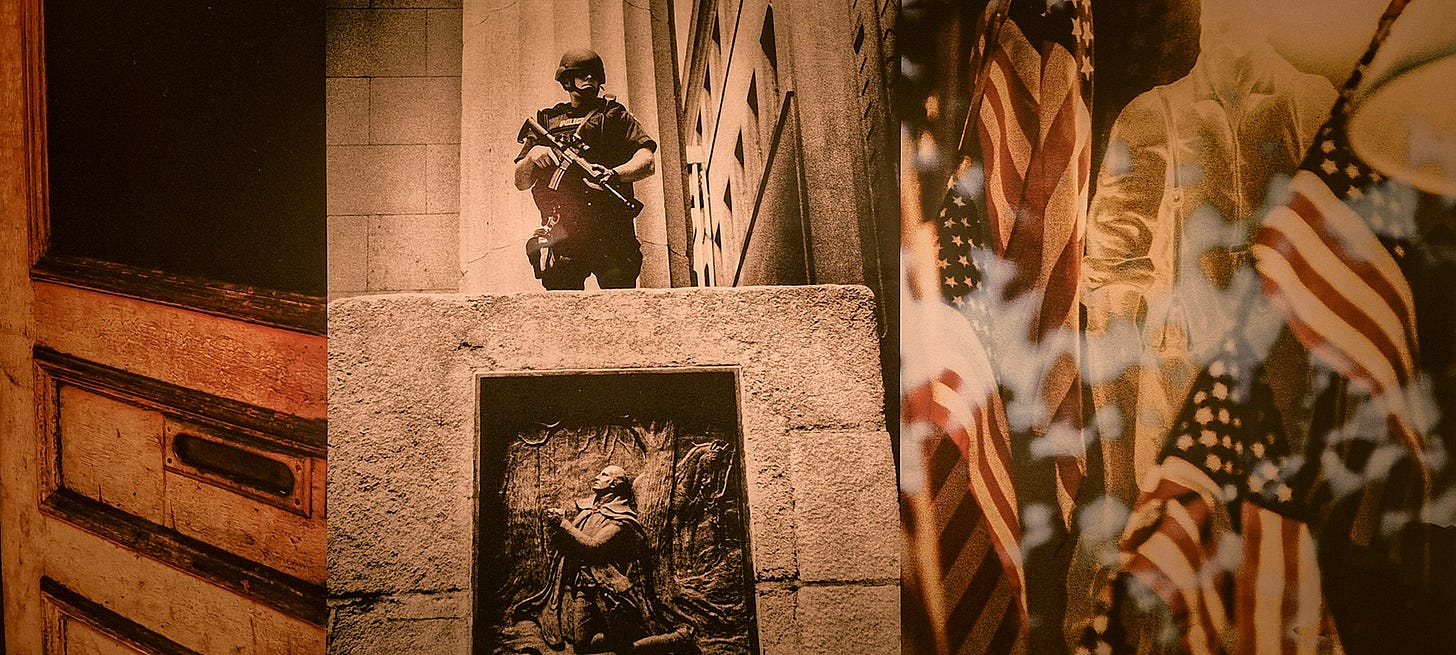
It seems like the only time folks talk about Substack nowadays is to lament this platform trying to be like other social media platforms—adding video content and pushing its short, quippy Notes feature over the niche essays and longforms that made it stand out in the first place. Just in casual browsing, I’ve seen a lot of anxious tears: Where are the essays? Where is the real writing? Will this platform go down the drain like all the rest?1
Um… I’m not seeing what y’all are seeing. My problem with Substack is the reverse: I’ve got too many essays saved for later. Too much to read. Too little time. I haven’t seen a single video in my feed and the Notes are pretty decent. I’m resigned to the fact that, most of the time, people who own a successful thing are going to do everything in their power to make it more successful and if that means trying to steal Instagram’s audience—well, c’est la vie.
As with most platforms, we have to be our own curators—find, subscribe to, and follow the folks and types of things you want to hear from. (Ignore the rest.) There’s no shortage of it if we look. Just wanted to get that off my chest.
Anyway, here’s the braindump for this month.
make art great again
Recently, I had the privilege of visiting the Timeless Mucha exhibit at The Phillips Collection in Washington, D.C.2 Alphonse Mucha is one of my all-time favorite artists and I love that his ascent to prominence came from designing posters for stageplays. Depite their classification as advertisements, the posters were also appreciable art pieces in themselves—dynamic, impressive, aimed at getting the viewer to stop, gaze, and wonder. Said Mucha himself:
Posters were a good way of enlightening the wider public. They would stop and see the posters on their way to work, deriving spiritual pleasure from them. The streets became open-air art exhibitions.
We need more public art that aspires to evoke awe and aspiration in the guy walking down the street or the gal sitting on the subway. Public content shouldn’t only be about selling stuff or selling people on some course of action. We need unnecessary art, purposefully made from which folks can derive spiritual pleasure and intellectual animation. (Sure, Mucha put his distinct, flowy, fantastical style to the service of selling cigarettes and alcohol too, but artists gotta eat.)
quotes Hal Freeman* on the resilience of ordinary folks in turn-of-the-century Russia: “Even in the years when poverty was common, things like ballet, opera, dramatic arts, and literature were still very important to the common people…”Recreational art is important for everyone, not just those who can afford to indulge in it. We need magnificent public arts—even in the form of advertisements—which remind us that life is more than doing and that art is valuable for its own sake.
When we forget our art we forget ourselves.
So, thank you, Alphonse Mucha for that reminder.
*Michael Stefan’s article is totally about something else. It’s titled, Why Are Artists Usually Liberal? And if you haven’t read it, it’s definitely not what you think it is, and it’s totally worth reading.
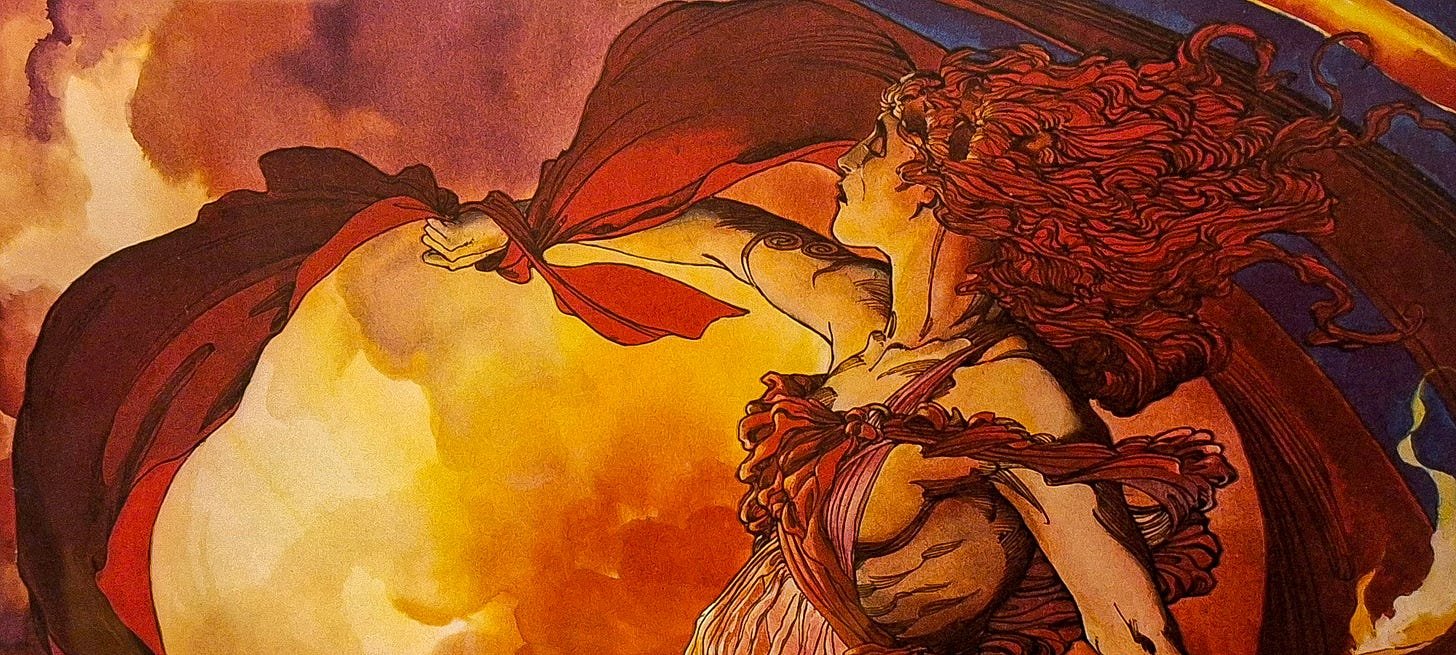
slow run to sainthood
’s book, Room for Good Things to Run Wild, has been speaking to me on the slowness of becoming a saint. He uses Nietzsche’s words—“long obedience in the same direction”—to describe the process.It’s been a long time since I’ve read a twenty-first century non-fiction book and had so many this is what I feel and have felt and am trying to feel moments. Read it if you haven’t.
And speaking of people becoming saints, I enjoyed
’ interview with , who argues in his new book that hey, it’s actually not that hard to believe in God. (I do agree with Douthat that you can’t really half-way your way into Christianity; it doesn’t work like that. You can’t take all the Christian trappings into your own life because of perceived socio-cultural benefits but, like, not actually believe. You just set yourself up for intellectual crises and probably a mental breakdown or two.)Honestly has just posted a new episode, “Can America Survive Without Christianity?” I’ll be listening to that soon. These are exciting times for the religious mind!
(dare)devil may care
I was going to write a whole post on Daredevil: Born Again, but I’ll spare you the incoherent fanboying. The follow-on to Netflix’s series is a solid return for sure. At its core are four men—Matt Murdock, Wilson Fisk, Frank Castle, and Billy Poindexter—wrestling with the nature of becoming someone other than who they’ve been. (Can old dogs really change their ways?) The measure with which this idea is explored varies for each character, although it’s almost non-existent for Castle. He’s pretty much the same as we left him in Punisher: Season 2—but all the pieces are there.
Overwhelming injustice weighs heavier than ever on Murdock, who hasn’t put on the Daredevil suit for about a year. He’s been staying busy with regular “really good lawyer” stuff. The show is a useful mirror for our current times when injustices abound and the most powerful men persist on paths that are questionable at best and traitorous at worst.
I’d have loved a more integrated conversation with Murdock’s Catholicism throughout the series: it’s something the Netflix take did really well, but it’s mostly behind-the-curtain in Disney’s follow-up. That omission is all the more obvious when Murdock recites the Litany of Saint Yves at the opening of Episode 6, which finishes with him suiting up as Daredevil and beating the crap out of Muse as his recited prayer plays again. (The ending of this particular episode is powerful, brutal, and so beautifully made.)

There are also a few scenes with extremely good dialogue (writing and delivery). Like, so good. 🤌
When Castle and Murdock are in the same scene, they’re as spicy as ever. And when Karen Page shows up to save them, it’s obvious they are both still in love with her. And she’s in love with both of them. And-oh-god-that-scene-was-so-painful-and-so-good. The tension! The drama! Everything unspoken, yet everything said.
attractive Christian culture
In the ongoing conversation surrounding attempts to build a Christian culture, two pieces came across my desk (ahem, my phone screen) this month:
This by
: If we want to win the culture war, we need a Saturday Night Live.And a response to that by
: Prospects Of A Faith-Friendly Saturday Night Live
Pittman seems to operate from an assumption that has become too common among conservative-minded folks: that one can mastermind the culture they prefer. However, culture rises organically. It can’t be engineered. Looking back, it might seem like there was a grand plan, but simply trying to ape Lorne Michael’s success with SNL and all the derivatives and diversions that grew from that is not a recipe for triumph. It’s a recipe for imitation, which American Christian art already has a bad reputation for attempting.
Stefan points out, rightly, that the most popular and effective Christian comedians are those who “utterly eschew a ghetto mentality” and embrace cross-pollination, artistic ecumenism, and a based understanding of popular culture. If someone were to attempt a successful “conservative” or “Christian” version of Saturday Night Live, he says, “the show has to be run by people who value humor, laughter, satire, wordplay, nonsense, etc. as ends in themselves in God’s creation, not for any utilitarian purpose.” Amen to that.
Also, as one preacher said at a service I attended a few weeks ago, “It is almost impossible for an unhappy Christian to capture a happy heathen.” If the conservative Christian wants to make art that captures society beyond himself, the way not to do it is from a grumpy, close-fisted, culture-despising frame of mind.
Add to this dialogue
’ recent interview with , in which Meynell declares that all the old church art that we love so much is essentially “propaganda”—very successful, enduring, and beautiful propaganda, yes—and that propaganda disguised as art should never be our aim.So much more conversation to be had here.
what are they singing in the country bars?
A few weeks ago,
posted a photo from Oxford on Instagram and tagged it with a caption along the lines of: What if the creativity and storytelling that’s thriving in Oxford made its way to the Midwest.It made me go huh? And, apparently, it made a lot of other people go huh? as well. Because…are we suggesting that the American Midwest has no creative aesthetic of its own? Or are we trying to reinforce stereotypical British snobbery? It does make one rethink their perspective on what is art and where good art comes from.
Anyway, I was very happy when Ekstasis posted a follow-up note here on Substack and folks chimed in with their takes on the creative and cultural potential that exists in middle America. (Go check it out.) Having lived in the UK the past few years and recently moved back to the States, I’m very interested in the sources and inspirations of art and what we think of as good and grounded culture and how that changes based on where we’re from and what corners of culture we pay attention to.
But what do I know? Your typical country bar demographic is dancing to Kendrick Lamar and GloRilla right now. #Thriving
nature is healing
I love when people practice what they preach, come together despite their differences, and participate in genuine conversation.
So I pitch to you… uber-liberal comedian, political commentator, and anti-Trump guy Bill Maher going to the White House to meet with the president, break bread, and have a chat. He reported back on that experience a few weeks ago. These are two people who don’t like each other at all and have said so publicly and also have numerous ideological, political, and social differences. And, yet, one of them (Maher) has consistently argued that the way we heal our country is by coming together despite our differences, seeing the other as a person (not an enemy), eating together, chatting it up, and living alongside each other. And it’s great to see stuff like this in our media. More, more, more. (Content warning for bad words.)
I also pitch to you this bonus episode of
’s podcast in which she talks with about all the important topics: sin, sex, and Jesus. Oh, and how to live with a peaceful, fulfilling, and harmonious mindset too. These women could not be more different and, yet, they find they are alike in the ways that matter most. This is the way. More, more, more of this.other notes
So sorry my braindump has gone on this long. But…
I haven’t watched Adolescence on Netflix yet—I hear it’s very good—but Josh Johnson comments on its popularity and takes on some issues in modern manhood in one of his latest gigs.
- ’s post, Why Christian Fiction Always Seems Forced, is very insightful.
I do like me some wizards and witches, and
has the start of a new serial fiction: Where Earth Meets Sky: Part IAlbums I’ve listened to lately: Jelly Roll’s Beautifully Broken (5/5 🌟), Glass Animals’ I Love You So F***ing Much, Nipsey Hussle’s Victory Lap
And some songs that hit right now: Lights’ “Alive Again” 🔥 (she has a new album coming out soon!), Sleigh Bells’ “True Seekers,” and “Kids of the Last Days,” by The Strike
Movies: There are so many I want to see, but most recently, I’ve watched Warfare (absolutely honest, brutal, and not for the queasy), and I’ll be seeing Sinners soon!
A late addition due to Pope Francis passing this week:
’s reflections on his death and ’s thoughts on a Vatican changed for women.
Do let me know what you’ve been watching, reading, listening to, or feeling inspired by.
meet me at Hutchmoot
Finally, God willing, I’ll be speaking at Hutchmoot UK in July (10th-13th) on a most important topic…
Yes, eventually it will. It’s entropy, and that’s life.
I’m ever thankful to The Reason Roundtable’s weekly cultural roundup because I wouldn’t have known this was happening without Katherine Mangu-Ward highlighting it. If you don’t listen to the podcast for the politics, at least listen for the hey, here’s the cool art/culture thing I did this week segment. (That link will take you to just the culture recommendations stuff.)




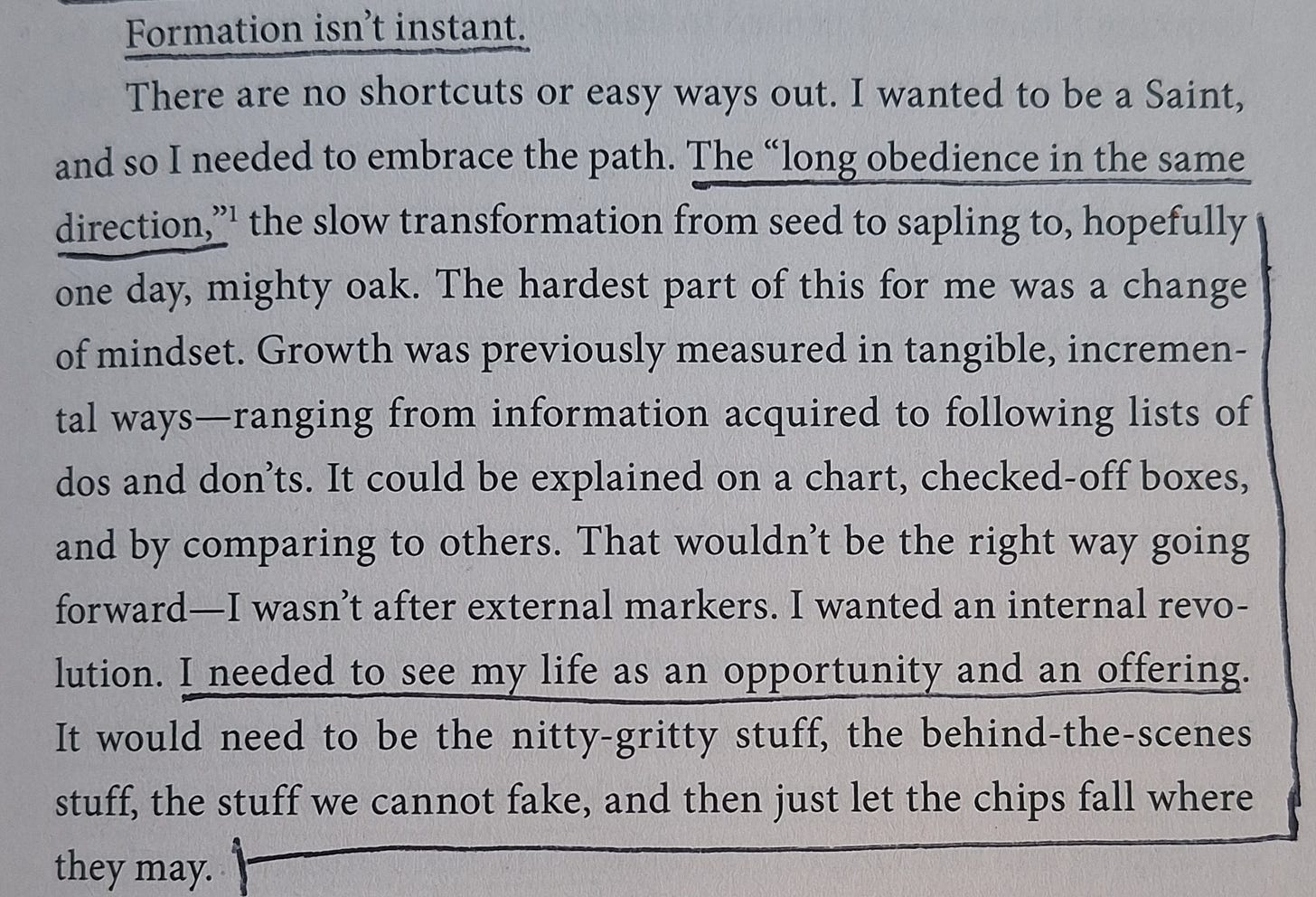
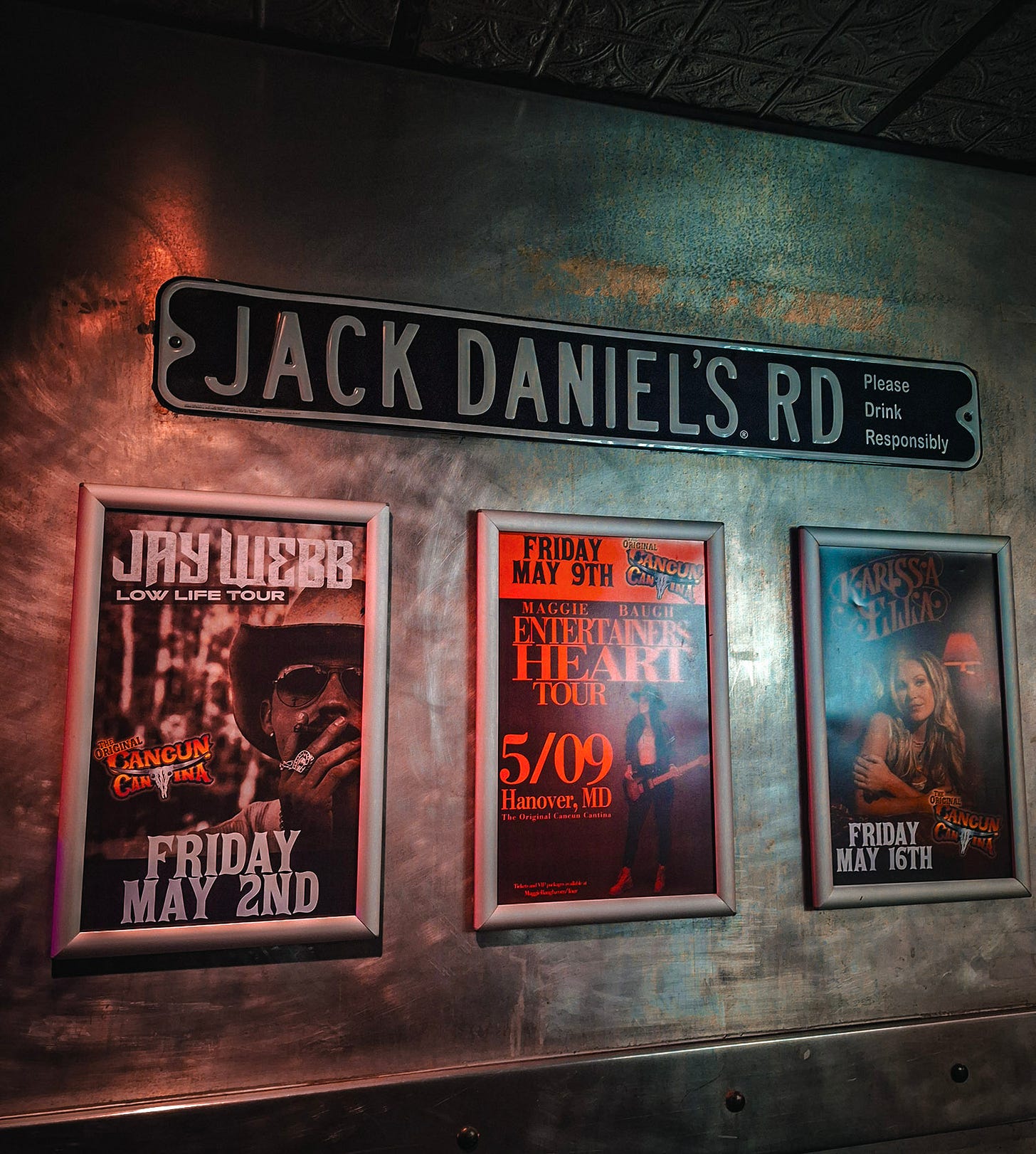
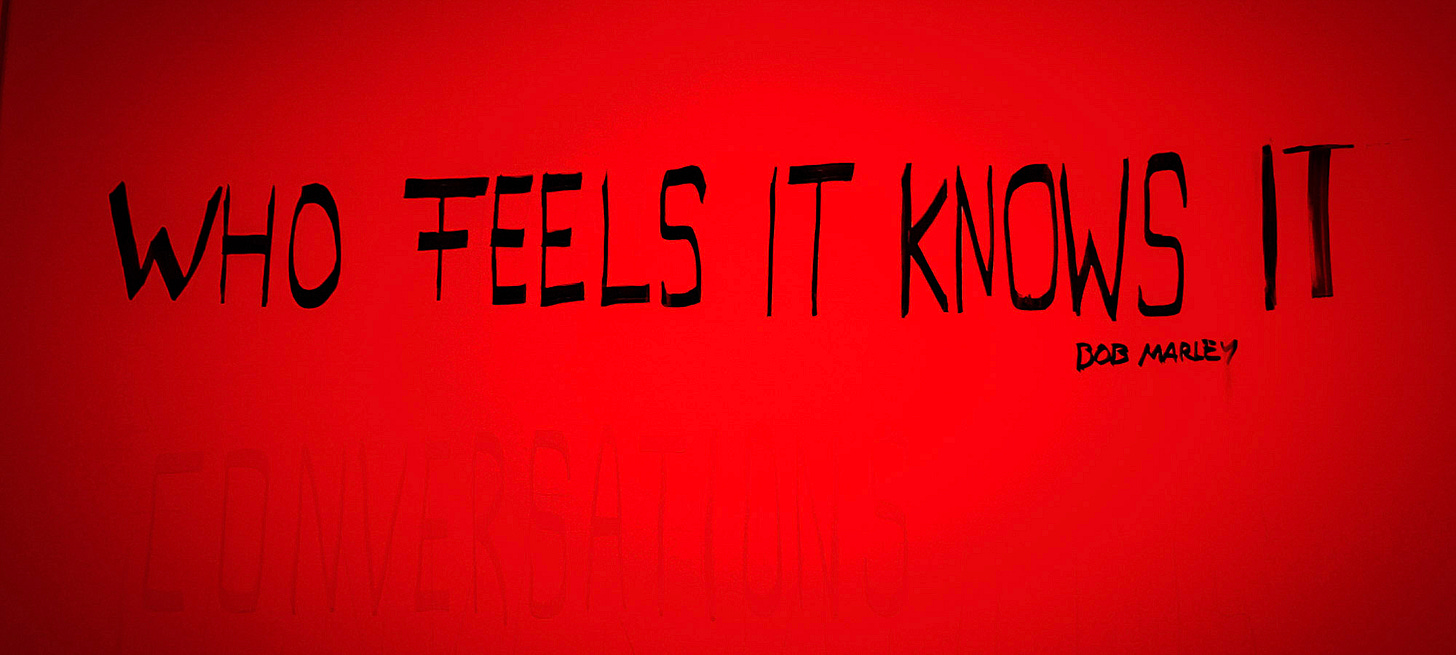

What! Very excited for your Hutchmoot talk. I think I’ll miss out this year, unfortunately. But I’ll get someone to tell me all about it!
Glad you liked two of my recent articles, I feel grateful for your distribution.